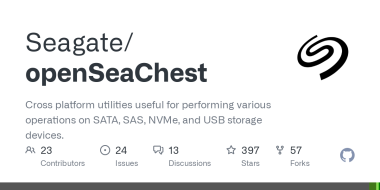Seagate open-source tool openSeaChest lets you configure your drives ( github.com )
Just want to share some love about Seagate.
My new DIY NAS is idle most of the time so I want to configure it to be as power efficient as possible.
I spent a couple of evenings trying to make my new WD Red Plus drives go to standby (spindown) after 30 minutes of inactivity, without success. I read about WD not respecting hdparm commands, interpreting them differently and tried all suggestions, again without success. I even read about WD support saying they don’t support Linux. Strange as most of the available consumer NAS systems are based on Linux.
I then decided to try my 2nd choice drives: Seagate Ironwolf. On the first attempt they also didn’t go to standby after configuring with hdparm. Then I found this: Seagate offers an open-source suite of tools named openSeaChest, which lets you configure and test your drives in any possible way including firmware updates and … tada, power settings. After enabling idle_c and standby_z and configuring the timers the drives now do how I configured.
I returned the WD drives. Now Seagate is my top choice for future drive purchases 🧡
